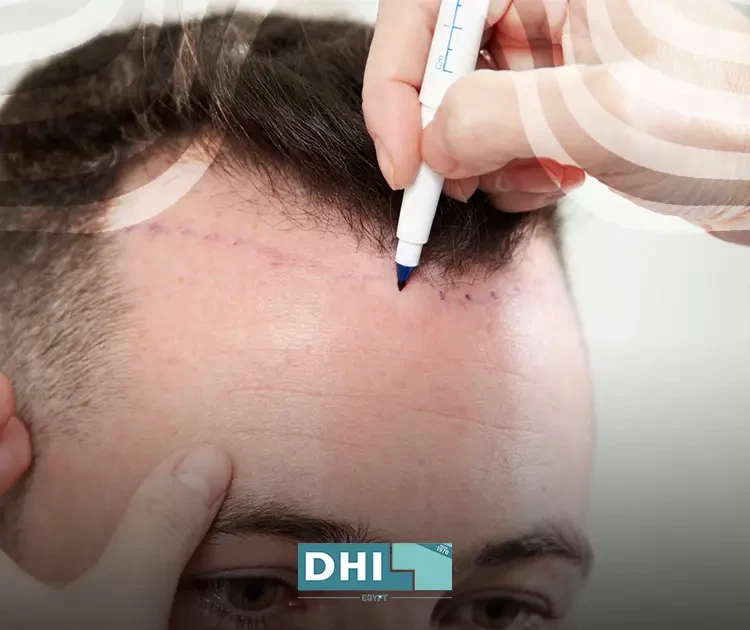Many people are interested in transplanting hair from another person's follicles. They are curious about the possibility of hair transplantation with donor follicles, whether it is possible, and what the potential benefits and challenges are.
In this article, we will go over the facts about hair transplantation from someone else's follicles and provide satisfactory answers to common questions so that you can make an informed decision about hair transplantation and understand how it affects the future of your hair and overall appearance. Let us shed light on issues that may be difficult to understand to some.
Hair transplantation and donor site selection
Hair transplantation is a procedure in which a plastic surgeon transfers hair from a thicker area to a bald area of the head. Usually the back or sides of the head are the donor area, due to the high hair density in these areas and the low risk of hair thinning.
Sometimes these donor areas also suffer from hair thinning and a lack of density, which prompts doctors to choose other areas of the body to take hair follicles from and transplant them into the bald areas of the head.
Where is hair collected for transplantation? Follow us in the next paragraph.
Where is the hair collected for transplantation?
Hair follicles from the beard, chest, abdomen, or other areas of the body are sometimes used and transplanted into the scalp, for example:
- Body hair from chest and legs.
- Facial hair from beard.
The main challenges in transplanting hair from other parts of the body are the low success rate and different hair growth cycles, as it does not grow as quickly as natural hair. Furthermore, the transplanted hair differs in characteristics such as color, texture, and orientation from the scalp, which may lead to significantly unsatisfactory results, as follows:
How to Transplant Head Hair?
How to transplant head hair requires consulting a professional doctor to determine the appropriate method, such as FUE or FUT hair transplantation. The process begins with taking follicles from a donor area and transplanting them into bald areas, which is an essential part of how head hair is transplanted. Post-operative care is important to ensure the success of how head hair transplantation is successful and to get natural results.
In the case of using body hair
In this case, the hair usually falls out after a year or two, and the transplanted follicles have a survival rate of around 10%, resulting in low density. For example, if chest hair is used, the growth phase of hair in this area (anagen phase) lasts only about two years, resulting in permanently short hair transplanted from this area.
also know:
Frontal hair transplant for men
Is it possible to transplant hair from another person's follicles?
Transplanting hair from another person's follicles is impossible, even if the donor and recipient share a biological relationship, such as siblings or parents, because each hair follicle is an individual organic unit capable of causing an independent reaction.
Even with genetic matching and tissue similarity, hair transplantation from another person's follicles can result in immune rejection due to high histocompatibility. Obtaining transplanted hair from the same person's donor areas remains the only and best option for ensuring the procedure's success and avoiding potential complications.
Why are organs transplanted from others but not hair?
To prevent the body from rejecting transplanted organs, immunosuppressants are used to suppress the immune system. Although these medications suppress the immune system's response, they may have unintended consequences, such as an increased risk of diseases like cancer among donors.
Suppressing the immune system is used to stimulate the body to accept vital organs such as the liver or heart. Hair is less important than your entire body's defense system, so sacrificing it is not worth it.
Alternatives to hair transplant
After we discovered the truth about hair transplantation from someone else's follicles, and if the various hair transplant operations are not suitable for you at the moment, or are not suitable for you in general due to problems in the donor areas, the following methods are an alternative to hair transplantation.
- Minoxidil: stimulates blood flow to the scalp, allowing more nutrients to reach the hair follicles, causing the follicles to enter the growth phase of their cycle.
- Vitamin injections: directly into the bloodstream through a vein, where 100% of the vitamins are absorbed.
- Plasma injections: into the scalp and in places where regrowth of hair is needed.
- Other methods: include using caffeine-rich shampoo to treat hair loss and rosemary oil to treat hair loss and lack of density (although it is unlikely to be used as an alternative to hair transplantation in cases of baldness).
In conclusion, the issue of hair transplantation from someone else's follicles is still being studied and researched. Until now, there have been no definitive findings demonstrating the effectiveness of this technique.
If you are experiencing hair loss and are looking for an effective solution, please do not hesitate to contact our trained team of hair transplant experts at the DHI Center. We will give you appropriate advice and treatment options based on your condition.

